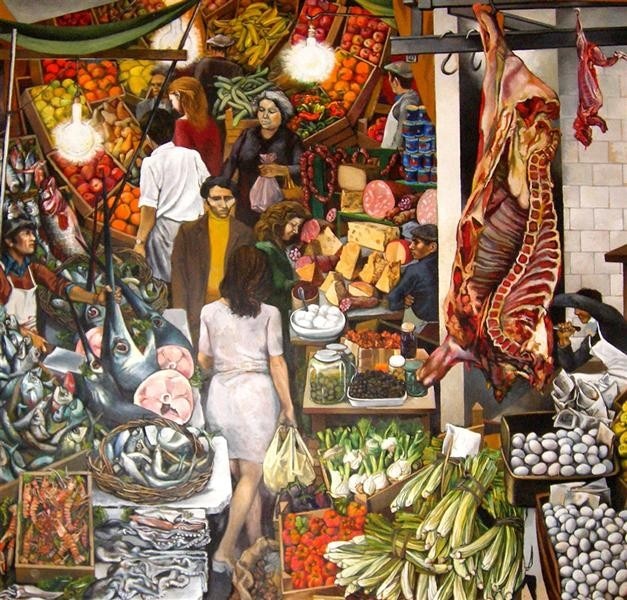On January 12, 1848, in Palermo, a revolution broke out against the Kingdom of the Two Sicilies. A popular uprising exploded, marking the beginning of a year of significant revolutions and uprisings throughout Europe. The General Committee was convened a few days after the intense riots, officially declaring the fall of the Bourbon monarchy.
Representative democracy was restored, and the Sicilian Parliament regained centrality in the governance of the kingdom.
Sicily, the homeland of Baroque, Greco-Roman architecture, myth, and emblem of the Mediterranean, has been narrated for centuries not only for its historically significant events that have modified Italian geography, but also for the great writers, painters, and intellectuals.

“Here then, at last, we said, is Sicily, the object of our journey, the topic of our conversation for so many months; here is the whole country spread out beneath our feet. By turning round, we can travel all over it in an instant; our eyes can pierce into every nook; scarcely any part escapes us, and yet it is far from reaching the horizon. We had just come from Italy; we had trodden on the ashes of the greatest men that ever lived and inhaled the dust of their monuments; we were full of the grandeurs of history. But here something of another kind addressed the imagination: every object that struck us, the crowd of thoughts that rushed into our minds, carried us back to primitive times. We came close to the earliest ages of the world, those ages of simplicity and innocence before men were saddened by the remembrance of the past, or terrified by the uncertainty of the future; when satisfied with present happiness, and confident of its duration, they gathered the fruits freely bestowed by the earth, and almost as pure as the gods themselves, met everywhere with the footsteps of their deities, and lived, as it were, among them. It is here that fable shows us the first men. This is the home of the divinities of Grecian mythology. Near this spot Pluto and Proserpine from her mother’s arms; in the wood we had just passed through, Ceres halted in her rapid pursuit, and tired with her fruitless search, seated herself on a rock; and, though a goddess, wept, say the Greeks, because she was a mother. Apollo tended his flocks in these valleys; these groves, which reach to the coast, echoed to Pan’s flute; nymphs strayed beneath their shade, and inhaled their perfume. Here Galatæa fled from Polypheme; and Acis, on the eve of falling under his rival’s strokes, still charmed these shores, and left to them his name. The lake of Hercules, and the rocks of the Cyclops, are visible in the distance. Land of gods and heroes!”
This is how Sicily was described by Alexis de Tocqueville.

Camille Corot, M.C. Escher, Auguste Renoir, Francesco Hayez, John Singer Sargent, and many other artists have been fascinated by this region, which over time takes on an almost mystical connotation.
An outstanding artist and emblem of Sicilian culture and art, Renato Guttuso is undoubtedly a prominent figure. Sicily was his muse, a goddess who sketched artworks for him, such as La Vucciria, a painting from 1974.
The ancient market in Palermo is described in detail, with its stalls and narrow, bustling streets. Visitors navigate through the center of the space, constrained by the tightly packed stalls. A woman in white walks forward, with a young man in front of her. They seem to be looking at each other, approaching. The merchants are absorbed in their tasks, busy displaying their goods. The butcher is preparing cuts of meat, reminiscent of the market’s name, derived from the French boucherie, meaning ‘butcher shop’. A cheesemonger waits for customers, while the greengrocer showcases crates of vegetables. The fishmonger also features, trying to grab the woman’s attention by displaying a portion of a large swordfish. Everything appears orderly yet full.
Guttuso painted several corners of his island, such as Santa Panagia, one of the districts of Syracuse. Architectures with a Cubist taste form a raw, harsh, and challenging landscape, where warm colors sharply contrast with cooler ones, almost as if he tried to depict more than just the place itself, namely the emotions of a land that is beautiful yet challenging.
Italian painter and sculptor Pippo Rizzo tells us, ‘If the painter is to represent through art the spirit, the soul of his land, Guttuso will be among them because Sicily has a thousand faces and a thousand souls that give charm to things and people. One should no longer think of the external vision of the coasts and mountains at a certain time of day and with a certain light. One must descend into the soul of this contrasting and dramatic land to fully understand the charm it emanates. But to reveal its intimate secrets, one must approach nature with a fresh and renewed spirit to fully feel the hidden harmonies that this great spiritual and transcendental land possesses, the center of myths and legends that clearly distinguishes itself from others in spirit and substance. When the value of Sicily is understood through works and signs left to us in the past, such as the portraits of Antonello and the metopes of Selinunte, one will better comprehend the spirit of the new Sicilian painting and sculpture.’
Opening image: Renato Guttuso, La Vucirria, 1974


